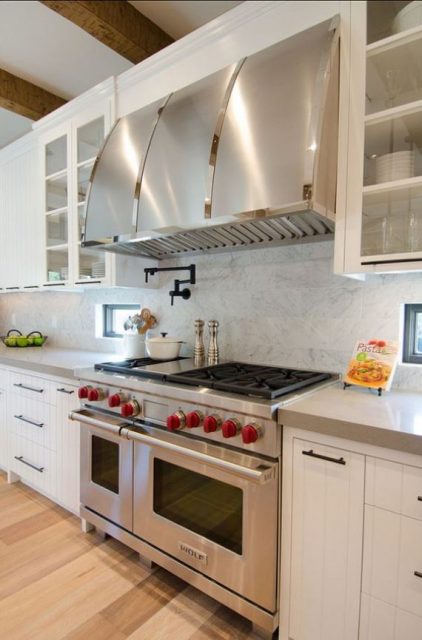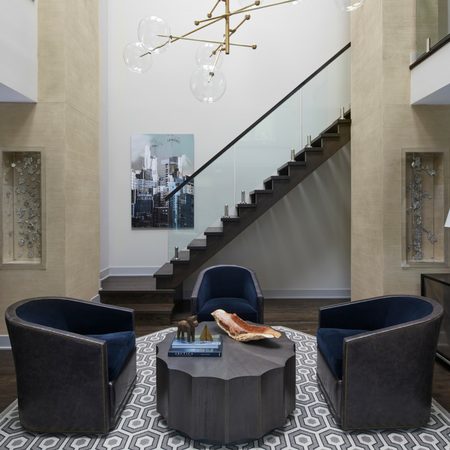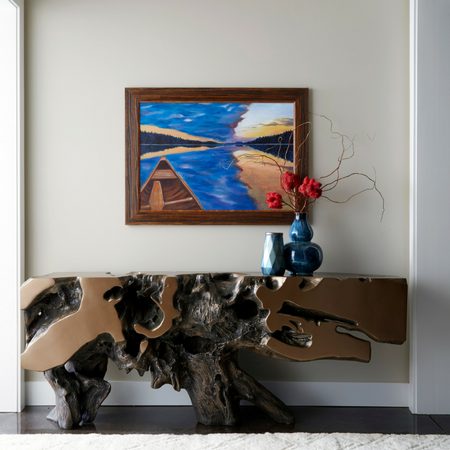
Design Speak 101 – Lesson 2
November 30, 2016
Welcome back to session two of Design Speak 101, an occasional blog-seminar in which I unravel the mysteries of interior design lingo from A to Z. Study hard, I’ll be quizzing you later – hahaha!
 Photo Courtesy of HomeBunch.com
Photo Courtesy of HomeBunch.com
Welcome back to session two of Design Speak 101, an occasional blog-seminar in which I unravel the mysteries of interior design lingo from A to Z. Be sure to study hard, I’ll be quizzing you later – hahaha!
Corbels are decorative brackets used as a support for shelving, vent hoods,counter top overhangs and mantels. Often they are carved from wood, but the wrought iron corbels in the kitchen above are sophisticated and eye-catching too. The contrast of matte black iron against the grey-and-white room is just the right touch. Corbels can be small or large, simple - such as the corbels supporting the kitchen counter below - or quite elaborately carved, and they often are used on the exterior of buildings as well.The technique of exterior corbelling, with rows of corbels for architectural support, dates back to Neolithic times in 10,000 B.C. and was common in Medieval times. I’d call that a long-standing tradition!
 Photo of Wood Corbels Courtesy of DecorPad.com
Photo of Wood Corbels Courtesy of DecorPad.com
Dentil molding sounds like something your dentist might make for you, but it is an elegant, detailed style of crown molding that resembles long rows of wooden teeth, a la George Washington’s famous, but fictional, dentures. (Myth buster: His dentures were actually made of other materials.) It often is used in traditional style homes, but it works for updated, transitional spaces too, as in this kitchen below, which we recently completed for a client. We added the dentil molding to this space to make it consistent with the molding throughout the main level of the home. Beautiful, and it does not require daily brushing, braces or annual checkups with the dentist!
 Photo Courtesy of Sweet Peas Design
Photo Courtesy of Sweet Peas Design
Vitrines are glassed-in showcases or cabinets typically used to display treasured pieces of art and memorabilia.
 Photo Courtesy of HickoryChair.com
Photo Courtesy of HickoryChair.com
The term comes from the Old French word “vitre” meaning window, or pane of glass. These beautiful pieces of furniture are typically framed in wood or metals and can be as large as book cases or small enough to display just one or two items, such as this elegant vitrine above framed in metal, with long tapered legs.
 Photo Courtesy of DriehausMuseum.org
Photo Courtesy of DriehausMuseum.org
Marquetry has nothing to do with buying groceries at the market, it is the ancient art of creating designs and scenes on furniture and other surfaces out of carefully fitted pieces of thin wood. The level of craftsmanship that goes into making these pieces by hand is beyond amazing. Using only the natural colors and grains from different types of wood, these craftsmen can produce incredible designs, which they inlay evenly with the surface of the piece. It might take dozens of tiny pieces of wood to make a single design element. I saw this handsome example of marquetry, above, on the wainscoting of a drawing room at Chicago's Driehaus Museum (one of the city's lesser-known gems, by the way). Sources vary on the origins of marquetry, but some say it dates back 2,000 to 3,000 years, and was highly prized by the rich throughout Europe, particularly during the Renaissance and into the 18th and 19th centuries.
 Photo Courtesy of ElleDecor.com
Photo Courtesy of ElleDecor.com
Stair stringers are the main structural supports running up the sides of most stairways.They provide a framework for the treads, risers, balusters and handrails. Often all of those staircase components are made in the same material and finish, but we sometimes like to combine stained and painted elements, as in this black and white staircase above, for a more dramatic and updated look.
Thanks for attending class, and stay tuned for more!

Share
You Might Also Like
Find us on Instagram














